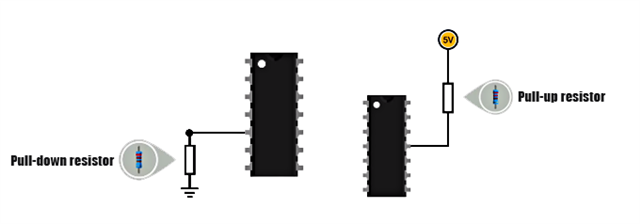https://www.youtube.com/watch?v=pWDCny75LrA
Pull-up and pull-down resistors are essentially resistors. They are called pull-up and pull-down because they are used in different scenarios.




Similarly, when the output low is not low enough, a pull-down resistor can be used to lower the low level. As for how much voltage can be pulled, it depends on the resistance value of the resistor.
In the switching power supply of the MOS transistor, a pull-down resistor is generally added to the NMOS transistor and a pull-up resistor is added to the gate of the PMOS transistor, which is about 10K. It typically plays three roles:

1. Determine the level of the MOS tube gate
2. Prevent electrostatic breakdown
3. Provide an emission pathway
When the MOS tube is powered on, it will be in a high-resistance state for a period of time. When it is turned on, this state is uncontrolled. NMOS may be interfered by high-frequency interference, and PMOS may be interfered by low-frequency interference, which can easily cause the switch tube to burn out.
At this time, adding resistance can make the gate a certain level and no longer a high-resistance state. That is to say, the MOS tube will remain in a closed state when powered on until the microcontroller controls its switch.

In addition, it is easy to accumulate some electrostatic charge when it is in a high-resistance state. When it reaches a certain level, a high voltage will be formed between GS. The MOS tube is easy to break down and be damaged, and a resistor is also needed to fix the level.
We have talked about providing a discharge path before. The reason is that there is a parasitic capacitor in the GS of the mos tube. The resistor provides a discharge path for the parasitic capacitor when the power is off.
